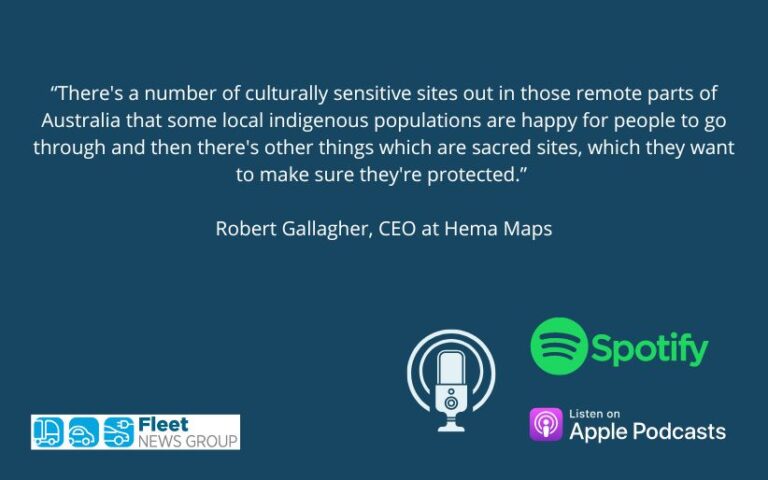Fleet Auto News talks with leaders at mapping technology specialists HERE Technologies and Hema Maps in this podcast about their location services that help keep drivers on remote roads safe.
HERE Technologies is the largest location services company in the world operating globally. It’s been mapping Australia’s urban roads for more than 20 years. It teamed up with Hema Maps in 2008 to embed their remote and regional areas into the HERE platform.
Dan Antonello, GM for Australia and New Zealand, said Hema uses HERE’s formats or protocols so that their data — HERE’s urban roads and Hema’s rural roads — harmonise.
“It means that the navigation experience seamlessly moves through these road segments,” said Antonello.
Hema, traditionally collecting data for off-line maps for four-wheel drive enthusiasts, has now found itself providing critical services to businesses operating fleets in remote areas — mining companies, pastoralists and Aboriginal land councils.
“We’re collecting enough data out there to get people into the regions and back home safely,” said Robert Gallagher, CEO of Hema Maps.
Increasingly, businesses are asking for maps of their private lands.
“That’s certainly an area we are having a lot of people talk to us about at the moment,” said Gallagher.
In addition, HERE and Hema are working with remote operators to better service their needs.
“Traditionally, Hema was a very consumer oriented service, really focused on that 4-wheel segment. The reality is, we’ve got a number of pastoralists, mining businesses. transportation businesses and they are are using our data and our systems in their workforces. And they’ve historically been using a consumer application.
“So what we’ve been doing is working with those different segments to understand their business needs, and then adapting our software and solutions to actually service some of the requirements,” he said.
“We’re actually working with them to just get better data into the system. And that allows us to represent better information on the map. It’s going to be plugged into the road network over time, or if it’s private, stay private.”
Antonello added: “You could overlay any of your workforce information; you might want to overlay any hazardous information that’s out there.”
Gallagher said Hema is working with Aboriginal land councils in northern Australia on how it embeds culturally significant areas into its maps.
“There’s a number of culturally sensitive sites out in those remote parts of Australia that some local indigenous populations are happy for people to go through and then there’s other things which are sacred sites, which they want to make sure they’re protected,” said Gallagher. In these cases Hema will mark the road as private or no access to help protect the sacred sites.
Click the link to listen to the complete interview on iTunes or Spotify.






